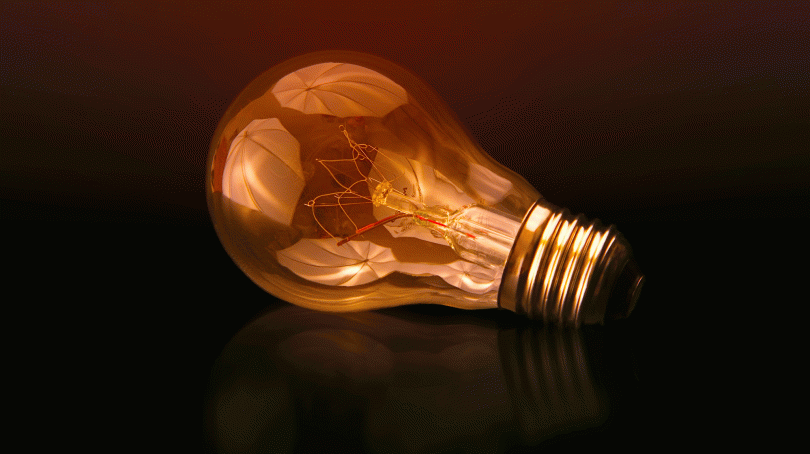States seek inventors able to revolutionise our future, contributing to progress and new ideas. What fosters and encourages invention? A wide-ranging study presented by Stefanie Stantcheva shows that taxes in the U.S. have a great influence on innovation.
What do potato crisps and electric light bulbs have in common? It’s not the energy they supply but the fact that they are both American innovations from the 19th century. We are not going to look at which is the more revolutionary of the two, but rather at what was behind their creation. For the first, legend has it that the cook George Crum was upset by a client complaining about his fatter French fries, and responded by thinly slicing potatoes, frying them and adding a pinch of salt. Crisps were born. As for the electric light bulb, it has become a household necessity all over the world thanks to an invention patented by Thomas A. Edison, an improvement on Joseph Swan’s first version, in 1878. These two completely different stories reflect the power of innovations to surprise us. But that does not prevent us from studying them.
The economist Stephanie Stantcheva sheds light on the incentives for innovations. She won the 2019 Best Young Economist Award and received the price in May by the hand of the French Minister of Higher Education, Research and Innovation.
With her colleagues, Ufuk Akcigit (Chicago), John Grigsby (Chicago), Tom Nicholas (Harvard Business School), she studies the link between innovations and taxes in an article called « Taxation and Innovation in the 20th century ». Understanding the impact that taxation has on innovation is a key to reducing its negative effects.

Photo by Nasa on Unsplash
The race for innovation
The United States is well known for its attractive conditions and culture of entrepreneurship. The country has long been aware of the weight of innovation in economic growth. The patent notion was inscribed in the early Constitution to ensure that progress in science or art would be recognised, and innovators rewarded.
According to the Bloomberg index of innovation in 2019, which ranks countries according to their innovative capacity, the United States holds 8th position, after being evicted from the top 10 by France in 2018. First place went to South Korea, the leader in innovations, illustrating the phenomenal progression of emerging countries. Despite the continued renown of Silicon Valley or American brands and inventors, these are being ousted by new competitors from emerging countries.
There are many incentives and techniques to promote innovation. However, few would consider taxes when seeking to increase the number of innovations. But taxation has a concrete influence on innovations. As inventors contribute to economic growth, the economist Stefanie Stantcheva explores how taxes impact the quality and the number of innovations. She suggests ways to optimise the redistribution of wealth within the State, thereby reducing the burden of taxes on inventions.

Photo by Johanne Plenio on Unsplash
A new perspective
Long-term data on innovation in the United States is not easy to gather. But Stefanie Stantcheva and her colleagues weren’t discouraged - they established a large panel of American inventors and patents since the 1920s. And that’s not all; they also identified every R&D labs in the United States during the same period. Their goal was to check this information against a database assessing historical taxes in each American state. They were seeking to reveal the effect of taxes not only on research and development companies and inventors, but on the American states themselves. In total, 2.73 million inventors and 4.2 million patents since the 1920s were involved.
The authors bring to light what can called the Newton phenomenon. Is it sufficient to sit under a tree to find a great idea? Or do inventors need carrots to encourage them to innovate? In other words, are they mad scientists working in the sole aim of artistic or scientific progress, or are they aiming for financial rewards?
Does taxation discourage innovation ?
Innovating doesn’t only mean having a great idea. Behind each creation, there are time and inputs invested and certain conditions have to be met. Would many people make it without them? That’s one of the reasons why the authors assess the impact of taxation: at the core of the growth and the competitiveness of the United States, innovations provide employment and guarantee progress in lots of areas. In this sense, offering the right fiscal conditions is economically important.
The authors estimate that doubling taxes reduces the will to file a patent in the next three years. Taxes negatively impact the number of innovations, their quality, and even their location. Innovative firms are particularly penalised, both by individual and company taxes. Company and individual taxes impact the production of patents and the numbers of employees working in research and development. Tax impact is nevertheless alleviated by the attractiveness of the sector. An innovator working in a highly innovative field will be far less sensitive to tax increase. Scientific emulation and competition within the sector seem to compensate for the negative impact of high tax.

Photo by The New York Public Library on Unsplash
Getting taxation right
Based on this finding, economists can help decision-makers to improve the taxation system. The goal is to implement the right taxation by providing a fair redistribution that encourages innovations to the greatest extent. For this to be feasible, Stefanie Stantcheva and her colleagues stress the importance of collecting substantial data. Their survey includes online questionnaires, laboratory experiments and data from national institutes. The same approach can be used in other fields to gather diverse and accurate information.
Over the long-term, the authors could compare the American context to those of other countries, both currently and in the past. Many interdependent questions arise as to inventors’ mobility, intellectual property, the relationship between federal and state taxation, leaving economists lots of issues to tackle. According to Stefanie Stantcheva, the need for empirical data and a better understanding of the effects of taxation is beyond doubt. She plans to realise other studies on individual perceptions of taxation, based on her research experiments, to assess taxation’s impact from different points of view.
Stefanie Stantcheva, invitée aux 18ème Journées Louis-André Gérard-Varet














